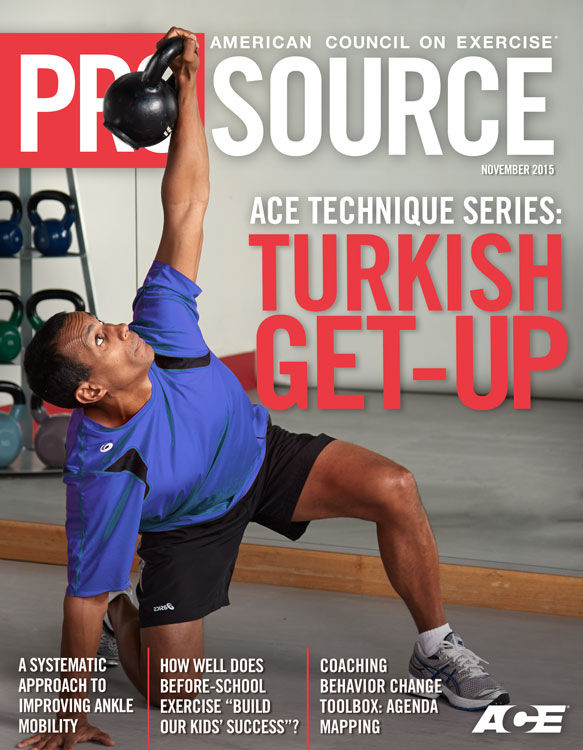Study: Regular Exercise Before Getting Pregnant Key to Minimizing Common Pregnancy Pains

Women who are hoping to get pregnant generally have a wide range of questions and concerns, including how to give themselves the best possible chances for a smooth pregnancy and delivery. It is, of course, well established that women who continue their exercise programs while pregnant typically have less pain and an easier delivery. And now a new study published in the British Journal of Sports Medicine suggests that exercise before a woman even gets pregnant may help minimize or even prevent common physical pains among moms-to-be.
Specifically, researchers concluded that exercising up to five times weekly before pregnancy may help to stave off pelvic girdle pain—an umbrella term for any type of pain associated with the joint and ligament changes prompted by pregnancy.
Pelvic girdle pain affects 2 to 3 percent of women and may last up to a year after delivery. It includes pain in the rear part of the pelvis and at the joint where the pubic bones meet at the front of the pelvis (the symphysis pubis), and has been linked to reduced physical activity during pregnancy, which itself is a risk factor for complications of pregnancy.
Researchers from the Norwegian Institute of Public Health looked at whether regular exercise before pregnancy might affect the risk of developing pelvic girdle pain in more than 39,000 women who were expecting their first child between 2000 and 2009. All the women were part of the Norwegian Mother and Child Cohort Study, which has been tracking the health and well-being of a cross-section of Norwegian women, recruited between 1999 and 2008, and their children. The average age of the women was 38, but ranged from 14 to 46.
During their 17th week of pregnancy, when the women attended clinic for their routine ultrasound scan, they were asked about the type and frequency of the exercise they performed in the three months before becoming pregnant. In their 30th week of pregnancy, they were asked about the frequency and intensity of pelvic girdle pain.
The frequency of exercise was scored from zero (never) up to 3 (at least three times a week) and added up across 13 different types of exercise: brisk walking; jogging or orienteering; cycling; training in a fitness facility; swimming; low-impact, high-impact, or prenatal aerobics; dancing; cross-country skiing; ball games; and horseback riding.
More than half (56.5 percent) of the women said they had exercised at least three times a week before they became pregnant, while 7 percent said they had not exercised during this period. It is significant to note that 90 percent of those who exercised before pregnancy were still exercising at week 17.
Overall, about one in 10 women said they had experienced pelvic girdle pain by their 30th week of pregnancy. That number rose to around one in eight among those who said they didn't exercise prior to getting pregnant.
What type of exercise proved to be most beneficial? Among the women who exercised regularly, researchers discovered that those who engaged in high-impact exercise, such as jogging, high-impact aerobics and ball games were the least likely to report pelvic girdle pain.
In fact, after accounting for influential factors, including age, weight (body mass index), educational attainment, smoking and a previous history of back pain, high-impact exercising between three and five times a week was associated with a 14 percent lower risk of developing pelvic girdle pain by week 30 of pregnancy.
No additional benefit emerged for an exercise frequency of more than five times a week, the findings showed.
The research team, led by Katrine Mari Owe, Ph.D., acknowledges the limitations of their study. Because it was an observational study, no definitive conclusions about cause and effect can be drawn. However, they do point to the well-known analgesic effects of exercise among people who are not pregnant or who have chronic pain, as a result of the “feel-good” endorphins produced.
“Acknowledging the limitations of our study, these results emphasize the importance of promoting regular exercise among women of childbearing age,” they conclude.
Source: Owe, K.M. et al. (2015). Exercise level before pregnancy and engaging in high-impact sports reduce the risk of pelvic girdle pain: A population-based cohort study of 39 184 women. British Journal of Sports Medicine, DOI: 10.1136/bjsports-2015-094921
More Articles
- ProSource™: November 2015
ACE Technique Series: Turkish Get-up
Health and Fitness Expert
- ProSource™: November 2015
A Systematic Approach to Improving Ankle Mobility
Contributor
- ProSource™: November 2015
Free Radicals, Antioxidants and Exercise: A New Perspective
- ProSource™: November 2015
ACE-SPONSORED RESEARCH: How Well Does Before-school Exercise “Build Our Kids’ Success”?
- ProSource™: November 2015
Coaching Behavior Change Toolbox: Agenda Mapping
Health and Fitness Expert


